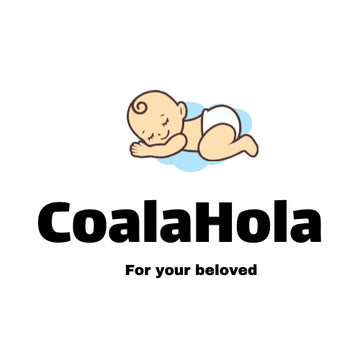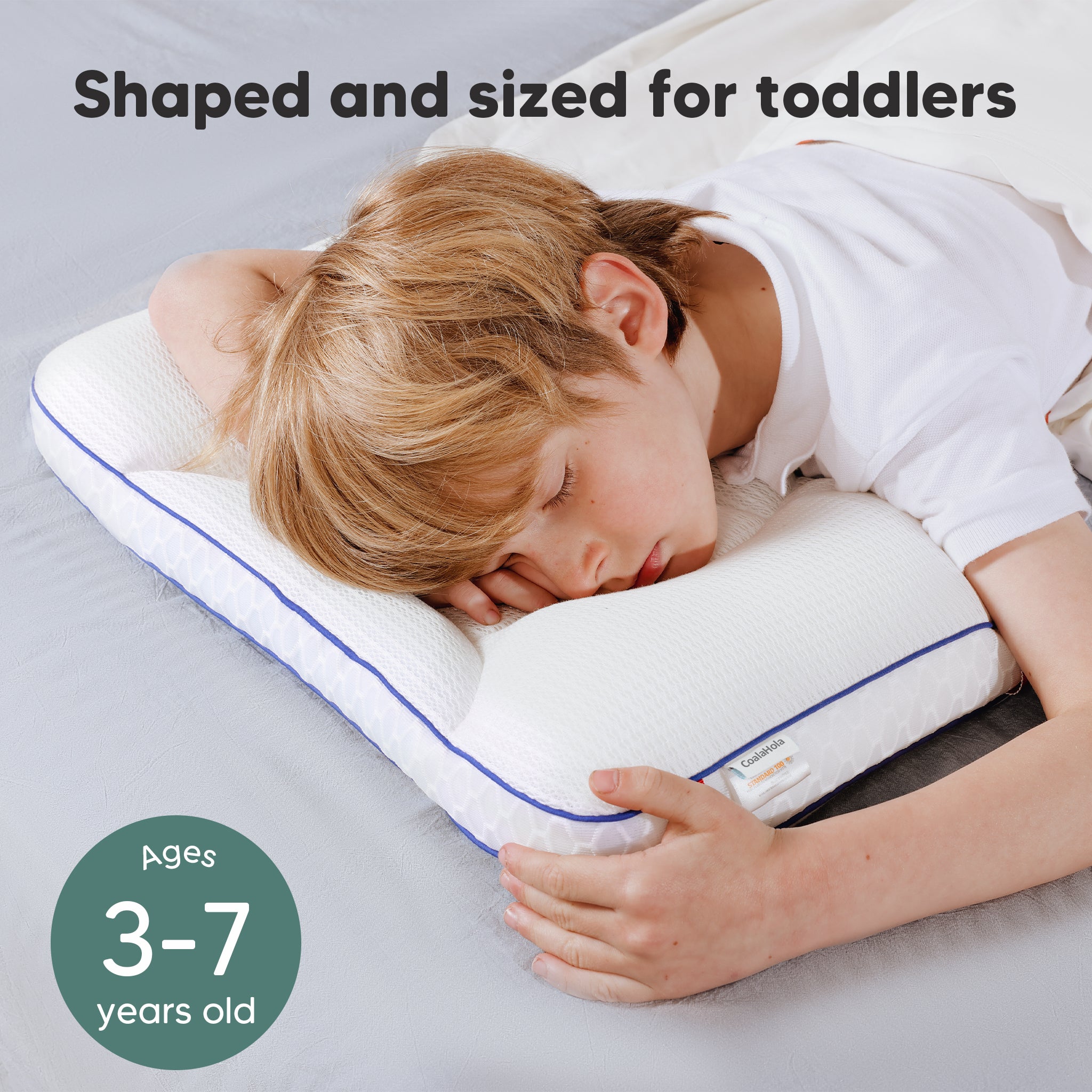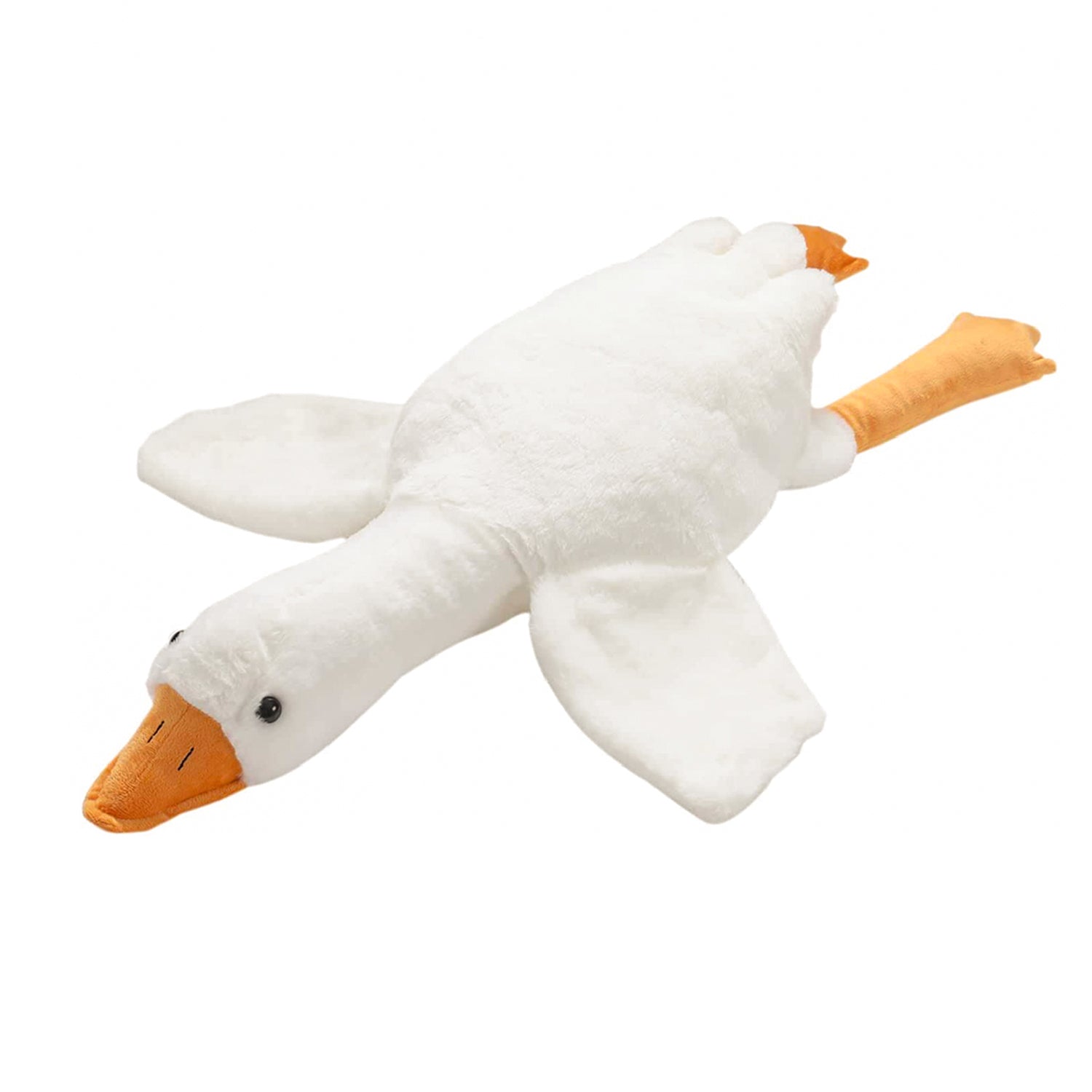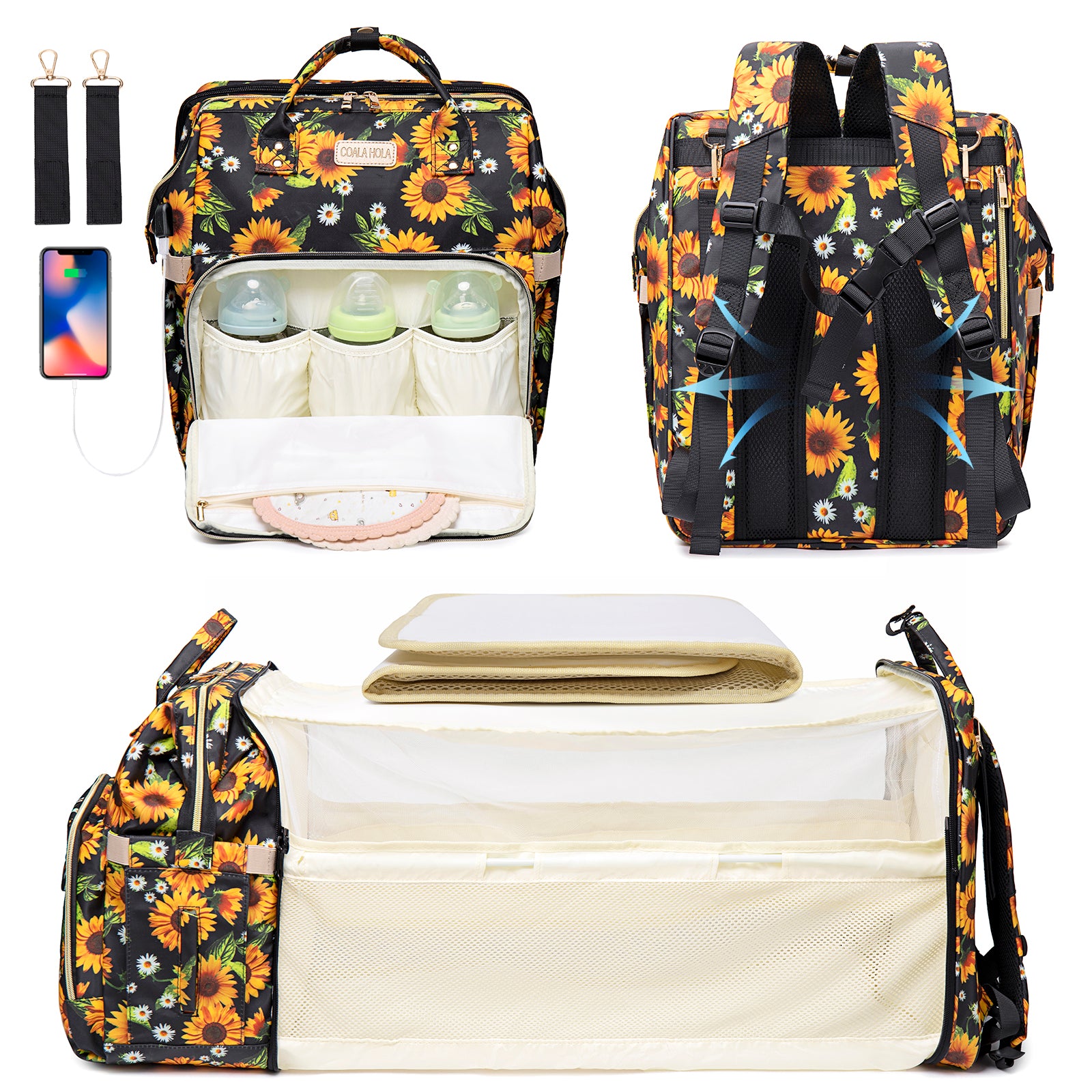The right time to use a baby carrier is a frequent topic of discussion among parents. This factor integrates physical characteristics and developmental phases, affecting the safety and comfort of both the kid and the caregiver. The choice between front and rear baby carriers also arises, with each having specific benefits based on your young one’s situation.
For caregiver convenience and child safety, it’s indisputable that choosing the best baby carrier is imperative. Parents who carefully select an appropriate baby carrier can improve their parenting experience by fusing their knowledge with parental instinct.

This article, therefore, makes a distinction between several kinds of baby carriers, such as wraps, carriers, and ring slings, to help streamline the procedure. In addition, it aims to shed light on what age your little one can use a baby carrier, on top of some dos and don'ts to help you navigate and ace your parenting journey.
At What Age Can I Use a Baby Carrier?
A variety of physiological, developmental, and ergonomic considerations go into determining when a baby can be carried securely. Having said that, the development of an infant's neck and head control is an essential developmental milestone for introducing a baby to a carrier.
The onset of this control typically occurs between 4 and 6 months of age, albeit individual infants differ in this regard. The infant's airway and musculoskeletal development may be in danger if they choose baby carriers before they have established adequate neck and head control. Therefore, before adopting the usage of a carrier, parents are encouraged to exercise prudence and abide by specified age requirements.
It is also crucial to choose the best baby carrier for a certain age range to guarantee the best level of safety and comfort. Infants that have developed neck control are typically better suited for structured carriers with adequate neck and head support. In contrast, wraps and ring slings could require a bit more parental skills to ensure optimal posture.
Another crucial factor, ergonomics, demands careful consideration. To avoid placing undue stress on the baby's developing spine and hips, a carrier that maintains the baby's natural C-curve spinal alignment is just as vital. This, in turn, puts emphasis on the importance of using age-appropriate carriers even more.
Of all, the development of neck and head control, which normally appears between 4 and 6 months, determines when a baby can be placed in a carrier. Caretakers must put safety first, take the infant's developmental readiness into account, and choose a carrier that meets their physiological requirements.
A Front or Back Baby Carrier, What Kind of Baby Carrier is Best?
Baby carriers have plenty of advantages that help both parents and their babies, including convenience, comfort, and intimacy. Caretakers may easily complete daily duties while keeping their child nearby and secure thanks to the perks of hands-free mobility.
Baby carriers create a sense of physical proximity that fosters a sense of security and emotional wellness in infants, thereby lowering stress and fostering healthy growth. Additionally, the close touch made possible by these carriers promotes a solid parent-child bond by generating oxytocin and strengthening the emotional bond between the two.
That said, front and back baby carriers have advantages; hence, choosing the best baby carrier requires a thorough evaluation of factors like the caregiver’s preferences, the child’s developmental stage, and fitting. Of all, pay attention to any sign of discomfort that your infant or toddler may be experiencing; if so, it may not be the right carrier.
Commencing a front-positioned baby carrier, the infant remains in intimate proximity to the caregiver's chest. This physical closeness cultivates a deep sense of security for the child, concurrently enabling the caregiver to vigilantly monitor the infant's well-being. Front carriers are also helpful for young ones as they enable ongoing physical and mental contact.
The front carrier, however, can be less ideal as the child gets older and develops more neck and head control due to potential discomfort for both parties.
A back baby carrier, on the flip side, is made to fit older babes and toddlers with more sophisticated neck and head control. By uniformly dispersing the child's weight across the caregiver's back and shoulders during prolonged use, the carrier minimizes strain on the caregiver's body.

Note that a back carrier also gives the child a clear view of the surroundings, stimulating their curiosity and participation.
Meanwhile, with a clever blend of hands-free comfort and one-handed help, the Coalahola Nanny-Pack Baby Carrier emerges as a flexible alternative for caretakers. This sling meets the demands of infants and toddlers ranging in age from 3 to 36 months.
The carrier’s cleverness lies in its versatility, as it accommodates different carrying postures for comfort preferences. Notably, the enhanced design puts a higher priority on airflow for the child's comfort amid prolonged wear, to pair with the carrier’s enhanced waist belt.
The specs include a weight range of roughly 3.5 to 20 kg and an age range of 3 to 36 months. An adjustable waist circumference of 67 to 114 cm aids in a tight and safe fit. The carrier is likewise designed to be lightweight, weighing in at just 793g. Ultimately, the bundle comes with a lumbar chair sling, a sleep cap, and an organic cotton biting pad as extras.
Of all, the key factor when deciding between the front and back carriers is ergonomics. To support the hips in an M-shaped posture, front carriers require attention to the infant's hip alignment. With advantages for weight distribution, back carriers reduce caregiver postural discomfort and promote prolonged usage without weariness.
In sum, the choice between a front and back baby carrier waters down to the comfort of the caregiver, the developmental stage, and ergonomic alignment. While a back carrier supports older infants and toddlers and offers ergonomic advantages and improved visual engagement, a front carrier fosters close bonding and is best suited for infants and babies.
For best practices, caregivers should follow specifications for front carriers regarding hip posture and progressively switch to a back carrier as the kid gains more head and neck control. Caretakers can choose in a way that maximizes the nurturing experience for both parent and kid by thoroughly evaluating these criteria.
Difference Between Baby Wraps, Baby Carriers, and Baby Ring Sling
Infant and toddler transportation methods include baby wraps, baby carriers, and baby ring slings. Each has special characteristics that are tailored to the preferences of the caregiver, ergonomic concerns, and developmental phases.
The following passages explore the significant distinctions between these three choices, outlining their features, usefulness, and applicability to parents looking for the best baby carrier for their personal tastes.
Baby Wraps
Baby wraps are distinguished by the fabric type they are made of. They usually consist of a long length of woven or stretchy fabric that is delicately wrapped around the infant and the caregiver. Many wrapping styles that can be adapted to various carrying situations, fitting infants from birth through toddlerhood, are what give baby wraps their adaptability.
Baby wraps are especially tempting to parents who want customization and a tight fit that matches their contours with the infant because of their utility. However, some caretakers may find it overwhelming due to its time-consuming nature.
Additionally, the clothing may expand as the baby develops, prompting changes to retain the best support. The importance of ergonomics cannot be overstated; improperly wrapped cloth can strain the shoulders and back of the caregiver.
Baby Carriers
Contrarily, baby carriers feature a structured design that supports the infant or toddler with a set of adjustable bucklings and straps. These carriers are frequently divided into front and back carriers, each of which has a specific function. Back carriers are best for older infants and toddlers who have good neck control.
Front carriers, on the other hand, position the kid facing the caregiver, encouraging bonding and eye contact. In various scenarios, some carriers even provide hip-carrying choices. Choose baby carriers that are simple to use, especially for parents who just started with baby-wearing. Oftentimes, they evenly distribute the child's weight across the caregiver's body.
The variety some parents seek may be constrained by the limited number of carrying positions available compared to wraps and slings. To maintain the child's comfort and musculoskeletal development, caregivers must then pay close attention to optimal ergonomic placement.
Baby Ring Slings
With a length of fabric stretched through two rings that can be adjusted to form a safe pouch, baby ring slings are a cross between wraps and carriers. Ring slings are well known for their ease of use and quick setup, which makes them perfect for short journeys and circumstances needing rapid changes between carrying and other activities.

Additionally, the fabric's flexibility allows for a variety of caregivers and guarantees a secure fit for the infant. Meanwhile, uneven weight distribution across one shoulder can cause pain with prolonged use and even result in muscle strain.
Even though ring slings provide a flexible range of carrying positions, the uneven weight distribution may call for more frequent modifications to relieve pressure spots. In turn, a ground-breaking anti-uterine innovation that puts caregiver and infant protection first is presented by the Coalahola Ring Sling Baby Carrier.
This carrier's ergonomic design ensures a comfortable fit. The cotton material, which is soft on the baby's sensitive skin, envelops the parent and kid in a comforting embrace. Its C-shaped construction also offers essential spine protection, while the M-shaped seating position encourages the best hip growth. The addition of padded neck support likewise ensures optimal comfort, making every journey soothing for the infant.
To add, this carrier supports adaptation as the kid develops by accommodating babies weighing up to 15 kg. It may be machine-washed on a gentle cycle with cold water, simplifying maintenance. Ultimately, its lightweight design makes it simple to fold and store; strict safety testing assures that it meets baby safety regulations.
To conclude, the decision between baby wraps, baby carriers, and baby ring slings depends on the preferences of the caregivers, the child's developmental stage, and ergonomic factors. Baby wraps provide for customization and a snug fit, albeit getting the hang of the wrapping methods may take some time.
Structured baby carriers are suitable for both inexperienced and seasoned carers due to their simplicity of use and weight distribution. Baby ring slings combine simplicity and adaptability, making the setup easy but requiring careful consideration of weight distribution for sustained comfort.
The best baby carrier ultimately depends on personal preferences and requirements. Wraps may be preferred by caregivers who want a personalized fit and flexible carrying posture, whereas carriers may be preferred by those who value simplicity and organized support. Ring slings provide a compromise between convenience and adjustability.
Caretakers can confidently choose the best choice to improve their baby-wearing experience and promote their child's well-being by carefully weighing these distinctions. As the saying goes, parents indeed know best.
Conclusion
Wrapping up, examining the nuances of baby wraps, carriers, and ring slings, each catered to caregiver preferences, ergonomic requirements, and developmental phases, is necessary when assessing the infant transport environment. For those looking for the best baby carrier, these choices provide various advantages due to their functionality differences.
Baby wraps, which stand out for their intricate fabric design, provide flexible wrapping methods that may be used in a variety of carrying postures. Although they guarantee a tailored fit that matches the features of the caregiver and the kid, potential fabric stretching may occur.
Structured baby carriers, by contrast, offer comfort through movable straps and buckles that accommodate both front and back carrying preferences. Back carriers are better for older infants and toddlers, whereas front carriers promote bonding and eye contact. Carriers have fewer carrying positions than wraps and slings but assure even weight distribution.
Baby ring slings, which are distinguished by cloth threaded through rings, fill the space between wraps and carriers. The unequal weight distribution across one shoulder requires occasional repositioning, despite being practical and adaptable.
Everything accounted for, caregivers can easily choose the best carrier by navigating these distinctions, perfectly blending convenience, comfort, and style as they engage in the astounding feats of parenthood. Choose baby carriers that guarantee a positive return with CoalaHola. Contact us today!










